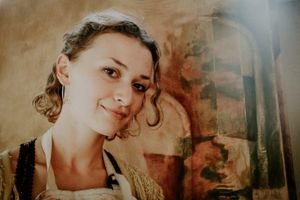OFFICE OF ACADEMIC APPOINTMENTS AND INTERNSHIPS
Which “Eraser” Reigns Supreme?
MCI Postdoctoral Fellow hosts a conservation workshop on the “Dry Cleaning of Soot-Coated Papers”
/https://tf-cmsv2-smithsonianmag-media.s3.amazonaws.com/filer_public/62/d3/62d3e5de-8fc0-4da8-b060-300f3cb446ea/soot_1.jpeg)
This truly joyous workshop satisfied my childhood quest. Which “eraser”, to put it extremely simply, reigns supreme? Amidst the remote climate, Postdoctoral Fellow Teresa T. Duncan has culminated her year of research at Smithsonian Institution’s Museum Conservation Institute with a hybrid workshop, titled “A Virtual Workshop: Dry Cleaning of Soot-Coated Papers”. For this “hybrid” workshop, attendees joined Dr. Duncan digitally for a presentation on her year’s findings and then proceeded with a physical exploration of a hands-on kit, which was mailed ahead of time to all participants. The workshop was attended by conservation professionals, including pre-program interns, emerging professionals, and senior conservation staff.
As a Paper and Photographs Conservation Intern at the Hirshhorn Museum and Sculpture Garden, I was delighted to participate in this workshop. Apart from emergency situations, modern and contemporary artworks don’t typically experience “soot” accumulation. I was excited to clean soot for the first time. For the first portion of this workshop, Dr. Duncan detailed her experimental findings on testing familiar conservation cleaning products and a couple lesser-known products. Data was collected on these cleaning materials using a variety of tools. Dr. Duncan went so far as to build an at-home Static Load Testing system to gather quantitative data on cleaning materials “stiffness”, drawing upon lessons from her previous Postdoctoral Fellowship in materials science with the National Institute of Standards and Technology (NIST). Most of the research she presented was focused on imaging paper surfaces after cleaning to infer which methods were most effective and why. Beyond data collection, thorough data analysis compared results gathered through image analysis of micrograph histograms with color photospectrometry data to parse out which method correlated most closely with visual observation.
/https://tf-cmsv2-smithsonianmag-media.s3.amazonaws.com/filer_public/e2/1e/e21e883b-ac65-40e7-b8b1-c2ad75bf2cd2/soot_3.jpeg)
/https://tf-cmsv2-smithsonianmag-media.s3.amazonaws.com/filer_public/9a/57/9a57a584-28ac-4ff6-bd9d-79e2dbbbaaab/soot_2.jpeg)
Pictured above is my work on “Substrate B” of the workshop. Substrates A–C were varied textures of watercolor paper. The group and I seemed particularly intrigued by three cleaning materials: a polydimethylsiloxane elastomer (Slygard 184®), Absorene’s Paper, Book, and Paper Wallpaper Cleaner (PBWC) and a soot sponge. This is not to say the other materials are not worth exploring, merely that these three created much discussion between workshop participants. These three materials were unique in working properties, texture, and odor.
Slygard 184® is an elastomer, with properties like a solvent-free gel, created by a commercially available two-part mixture that was cured and solvent rinsed to purify the resulting material. Slygard’s particularly dry, odorless, flexible, reusable and transparent properties are noteworthy. PBWC is known in some conservation circles as “The Magic Pink Ball”, and it performed quite well in these trials. While Dr. Duncan’s fellowship focused on “contact”, “adhesion” and “conformability” of these cleaning tools, it was acknowledged that cleaning residues play a large role in treatment approach. The final substrate of the workshop was Substrate D, a glass slide, wherein we could tamp our products and visually observe residue. Although Dr. Duncan acknowledged that a glass slide is a very different surface than paper, the smooth surface of the glass allowed us to easily visualize potential residues on the surface. PBWC and the Soot Sponge are odorous and both imprinted residue on the glass. I loved that the workshop finished with Substrate D and this question of residues, opening further avenues of inquiry to truly capture the spirit of participating in Dr. Duncan’s research.
Below is a word from Dr. Duncan:
“I’m so appreciative to all of the attendees, including the author of this blog post Tess Cramer, for adding so much value to this workshop experience. We all met virtually to test these cleaning materials, noting observations as we went, to give the feeling that we were all gathered around a single workbench or table, chatting in-person. These kinds of experiences are invaluable to me as a scientist: input from conservators is essential to ensuring that research strategies are designed to probe those questions most important to conservators as they strive to conserve and preserve our heritage.”

